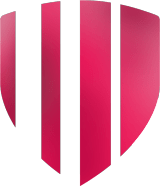Customers often ask us about the materials that are used for the production of artist brushes. That’s why we thought it would be a great idea to create a small overview of the most common materials used for brush making:
Kolinsky Red Sable Hair
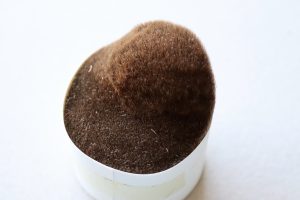
The highest quality of hair is from the Siberian Kolinsky red sable. It comes from the tail of the male sable who is native to Northern Siberia and Northern China. These regions are dominated by severe cold. That’s why the animals have to adapt to extreme weather conditions. Thus they have to grow a very thick winter coat. That is why the valuable Kolinsky red sable hair is the best for premium artist brushes. They have extremely fine tips, relatively light color and favorable elasticity and resilience. A very special rarity with unique painting characteristics.
Red Sable Hair
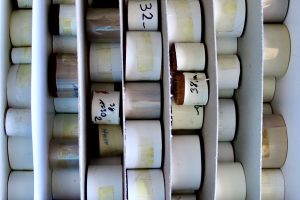
The hair of the red sable comes from sable species that live in more southerly regions with nicer climatic conditions. Red sable hair is not as expensive as Kolinsky red sable hair. It is not as strong and also a little bit darker than the Kolinsky red sable hair. Still, it is one of the highest quality hair types that can be used for artist brushes. Red sable brushes are definitely a pleasure to paint with!
Squirrel Hair
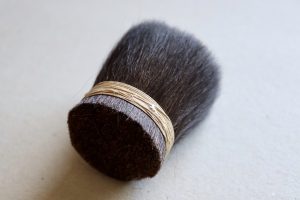
Squirrel hair comes from the tail of the Canadian and Russian squirrel. There are two types of squirrel hair that are being used for artist brushes. Blue squirrel hair and Kazan squirrel hair. This is primarily used for porcelain and ceramic brushes. Generally, squirrel hair is very soft and has an amazing paint absorption quality. However, its resilience is a little lower than that of the red sable hair.
“Toray” Synthetic Hair
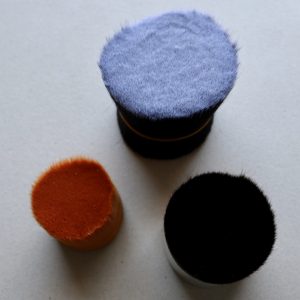
One of the few synthetic hairs suitable for manufacturing artist brushes is called “Toray”. Like natural hair, it has a conical shape (it becomes narrower towards the tip). It possesses a high degree of elasticity and favourable resilience; however, in comparison to natural hair, it lacks the natural scaly structure. These brushes have very nice painting characteristics but a little bit less of color holding capacity. “Toray” hair is available in all different colours.
Natural/Synthetic Hair Blend
For some artist brushes it is nice to have the best characteristics of both hair types combined. Another advantage of brushes with natural/synthetic mix is that they are more affordable than brushes with pure natural hair.
Chungking Bristles
lineo brush makers only use the best bristle from the region around the city of Chungking in China. These bristles are usually bright, very robust and are characterised by very favourable paint absorption and elasticity.
Goat Hair
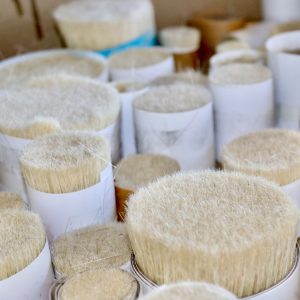
The highest quality of goat hair used for lineo brushes comes from different regions throughout Asia. Goat hair is mainly used for sturdy flat brushes or for school brushes. It is also used for special mending brushes.
Ox Hair
The light, brown and black ox hair comes from the ears of special breeds of oxen. These hairs are quite strong and have a nice elasticity. Thus they are used for good flat brushes and are a great choice for oil brushes.
Ferrules
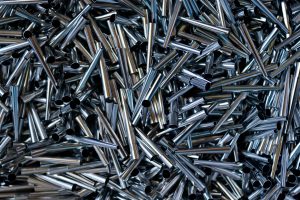
Ferrules are the metal sheaths that are giving the brush some of its shape. They are the connection between the brushes head and the handle. There are many different types of ferrules. Seamless nickel and aluminium ferrules and tin ferrules with soldered or crimped seams. lineo brush makers only use the best seamless nickel ferrules from drawn brass tubing for making producing their premium brushes. They retain their shape and provide a firm and lasting connection between handle and brush head.
Handles
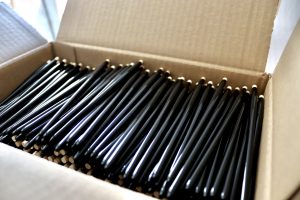
All lineo brushes have handles made of genuine natural wood (FSC certificated). For some series, lineo brushes come with nice natural handles while most of the handles are lacquered. All handles are made in Germany and only high-quality lacquers are being used.
Gumming
At the end of a production sequence, all high-quality lineo artist hair and bristle brushes are treated with a gum arabic solution, so that they will be protected during transport and reach the customer undamaged.
Protective Hair Covers
To better protect the brushes, especially for shipping, we use protective brush hair covers. These are made from transparent plastic.
